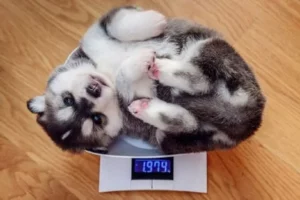Heart disease is a dangerous medical issue affecting humans, dogs, and cats. The usual illnesses that affect people, such as heart disease, do not typically affect pets. Any irregularity of the heart is referred to as “heart disease.” It includes various problems, such as congenital abnormalities and disorders of physical structure and function, electrical activity, the ability to contract and relax, or electrical impulses that regulate the pace or rhythm of heartbeats. Although cats and dogs can develop heart disease, cats are more likely to develop structural abnormalities in their heart valves. In contrast, dogs are more likely to develop these abnormalities in the heart muscle itself.
Heart of your pet
Due to the heart’s invisibility and its shielding by the rib cage, cardiovascular diseases may be more difficult to identify and quantify. Approximately 10% of the animals that a veterinarian examines suffer from a cardiovascular condition.
Younger dogs are less likely to get heart disease, but as dogs get older, their risk of developing heart disease rises significantly. Heart disease is frequently a “silent” condition in cats, which means that it might not be discovered until it is too late. The prevalence of heart disease in cats is unknown because it frequently goes unrecognized. The heart of your pet is in charge of pumping blood to various body parts, assisting in healthy organ and muscle function. To perform its function well, it must be in good condition. It is extremely important that you understand the state of your pet’s heart for this reason. The first step is to take your pet to the vet for periodic checkups.
The veterinarian will examine your pet and look for any symptoms of potential heart illness, such as wheezing, coughing, or the existence of a murmur in the heart. As many pets with heart disease may not exhibit any symptoms, this can be difficult. In fact, heart disease can develop in cats and dogs years before you discover anything wrong.
Risk Factor
“Heart disease” is a broad phrase that refers to a variety of illnesses that can either be congenital (existing at birth) or acquired. Most cats don’t show any clinical symptoms until the condition is further developed. Cats with heart problems rarely cough, unlike humans and dogs. There are several factors that can increase a pet’s chances of having heart disease:
- Elderly Age: animals are more likely to have heart disease.
- Breed: Some heart conditions are more prevalent in certain breeds of dogs.
- A diet low in taurine has been linked to the onset of dilated cardiomyopathy in cats.
- The Food and Drug Administration has noted a possible link between grain-free meals and the emergence of dilated cardiomyopathy in dogs.
Clinical signs and symptoms
Any illness of the heart or large blood vessels known as heart disease stops oxygen from being carried normally throughout the body and affects how the heart functions. When the sick heart starts to struggle to pump enough blood to meet the body’s demands, congestive heart failure sets in. The damaged heart starts to lose its capacity to pump enough blood to meet the body’s requirements, which is when congestive heart failure starts to develop. Some clinical signs may include:
- Breathing problems
- Increased rate of breathing
- Stomach bloating
- Fainting
- Bluish hue to the gums or skin
- Decreased appetite
- Reduction of weight
- Cyanosis (a condition in which the gums turn blue)
Remember that the symptoms of aging and heart disease can be mistaken for one another, so keep an eye on your pet and contact your veterinarian if:
- is sleepy or lethargic and doesn’t want to play or exercise
- is coughing or having breathing issues ruptures or faints
Your veterinarian might advise you to keep track of your dog’s breathing rate while it’s sleeping at home. You can use this as a useful tool to track the onset or progression of congestive heart failure in pet animals who already have a cardiac condition.
Type of Heart Diseases in Dogs and Cats
Dogs are most frequently diagnosed with dilated cardiomyopathy and mitral valve disease. Heart failure can result from both. The most often afflicted dog breeds are those with certain forms of heart disease.
Mitral valve disease
The most prevalent acquired heart condition in dogs is, by far mitral valve dysfunction. This can happen to any breed, but it is more common in small dogs. The issue appears as the heart’s Mitral valve decreases and transforms over time. Mitral valve disease develops when the mitral valve, which is positioned between the left atrium and the left ventricle, thickens and distorts. Consequently, the valve begins to leak, allowing blood to flow against the force of gravity.
Dilated cardiomyopathy (DCM)
It can be found in both dogs and cats, but it is significantly more frequent in dogs. This condition affects the cardiac muscle and causes weakening of the heart wall as well as diminished pumping power. DCM can cause collapse and sudden death, particularly in certain breeds like the Dobermann Pinscher.
Cats are most frequently afflicted by hypertrophic cardiomyopathy, a form of cardiac condition in which the heart’s walls swell and become ineffective at pumping blood. Heart failure may result from this. Cats of any age can get this sort of cardiac disease, and since some cat breeds are more likely to have it than others, there may be a genetic tendency. The most often afflicted breeds are:
- American Shorthair
- Maine Coon
- Persian
- Siamese
- Ragdoll
- Sphynx
Diagnosis
If your veterinarian has a suspicion that your pet has heart disease, they will do a thorough physical examination and pay particular attention to the heart to look for any signs of heart-related issues. Some additional tests might be carried out because heart disease isn’t always the cause of murmurs:
- X-rays to look for heart and lung problems
- a blood examination to assess heart disease
- a blood pressure checkup to evaluate the cardiovascular system
- an electrocardiograph (ECG) that records heartbeat electrical activity
- an ultrasound called echocardiography to assess the anatomy and function of the heart.
The underlying condition will determine the course of treatment for heart disease in pets. Although many cardiovascular diseases unfortunately never completely go away, they can be controlled with various treatment options. After a heart condition diagnosis, your pet may receive one of the following treatments:
- Dietary modifications, including a low-sodium diet or suggested dietary supplements
- Diuretics that help remove the extra fluid that has accumulated as a result of impaired circulation
- medications that relax blood vessels, increase blood flow and improve heart performance
Depending on each animal’s specific demands, different treatments may be required for heart disease. Your pet can have a long, healthy life with proper care, early discovery, and monitoring. Your veterinarian will create a strategy that works for both you and your pet.
Maintaining the health of your pet
While poor diet and inactivity can lead to heart disease in humans, this is not the case for our pets. Fortunately, if you catch it early, your pet will continue to live a long and healthy life. Here are a few tips:
- Keep an eye out for changes in your pet as he or she gets older.
- Keep an eye out for adjustments in your pet’s energy level and appetite.
- Maintain a healthy, typical body weight for your pet.
- Understand your pet’s breed or combination of breeds, as well as his or her risk of heart disease.
Bring your pet in for routine examinations. This is one of the most crucial things you can do to take care of your pet. Heart disease is just one of the numerous illnesses that, if detected early, can be successfully treated.




